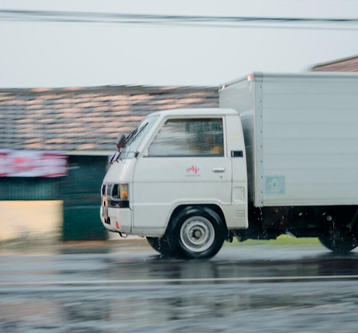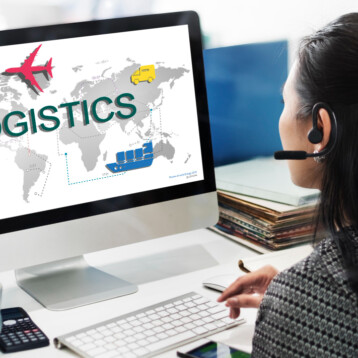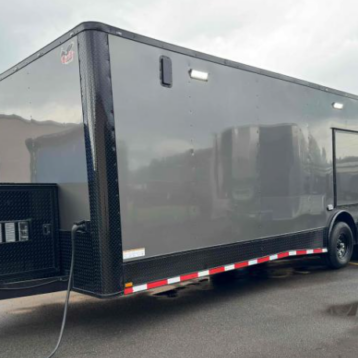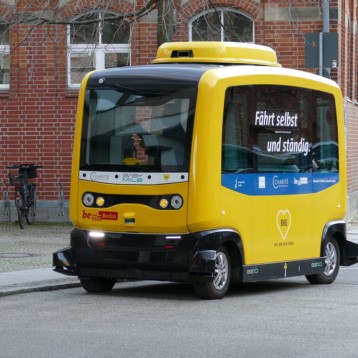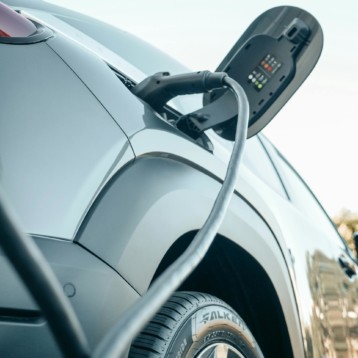Warehouses serve as important links in the supply chain all around the world. Statistically, every year the number of competitors in this field is steadily growing. If, as of 2021, the volume of the global warehousing market was $528,320 million, considering an average annual growth rate of 3.1%, by 2028 this number will reach $654,920 million.
Managers and staff of warehouses constantly have to face many challenges. Inconvenient search for goods, downtime or breakdowns of equipment, and difficult tracking of assets in the warehouse – all these issues significantly complicate the ability to compete in the market. The problem can be solved in conventional ways, such as physical documentation or asset and inventory management software, but IoT (Internet of Things) solutions for warehouse tracking systems are considered more effective today.
What is IoT?

The term IoT (Internet of Things) refers to a network of objects that connect to the World Wide Web and can mutually exchange data. If we consider this concept for warehouses, then the Internet of Things includes sensors, readers, and other equipment that controls and manages daily tasks.
Using IoT tools, you can quickly find the right goods or equipment, track the movement of forklifts, and monitor compliance with product storage conditions. All information provided by the system is displayed in an app (mobile or web) and helps companies maintain a high quality of service throughout the supply chain.
To improve workflows in warehouses, many IoT solutions can be applied. The most effective of them include indoor positioning and asset tracking (goods, pallets).
Indoor warehouse navigation with beacons/sensors
IoT warehouse asset tracking allows you to organize convenient navigation inside the warehouse. Sensors are installed throughout the warehouse space and set to determine the user’s location and help them get to the desired shelf or product. Employees are provided with digital maps inside mobile or web applications, through which they can quickly find places of interest and build routes to a specific point inside the premises.
After implementation, the system develops routes in a way that allows reducing the difficulties for staff. The workers have to move less throughout the warehouse during the day, which increases their productivity and minimizes logistics costs.
Using warehouse tracking systems provides many benefits:
- increasing convenience in the search for goods;
- providing quick access to any objects in the warehouse;
- reducing time for staff tasks;
- optimizing the location of goods on the shelves;
- prompt response to emergencies.
Asset tracking of objects inside the warehouse (pallets, goods)
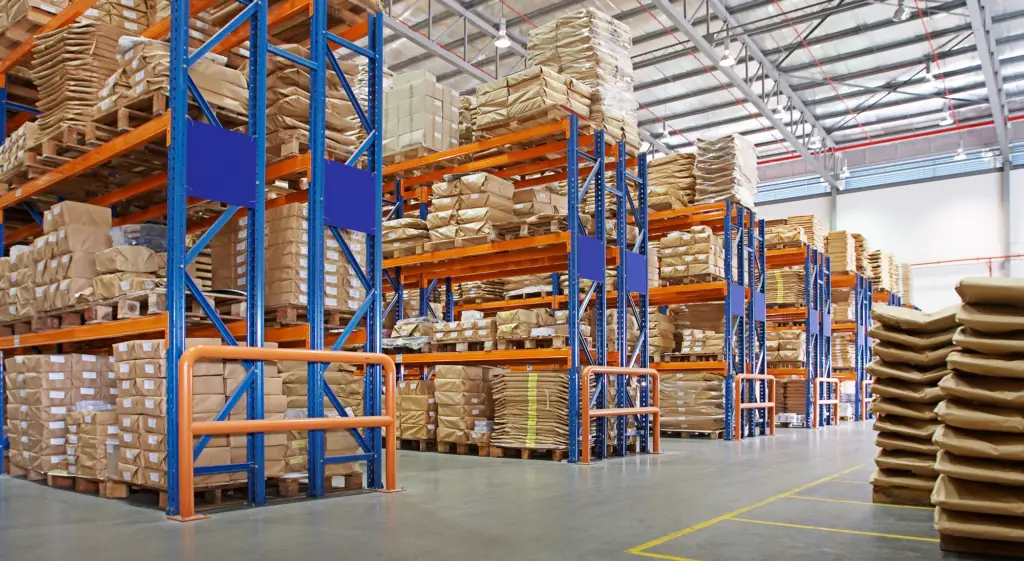
Modern tracking systems in the warehouse allow for precise control over the movement of goods. With IoT solutions, you can easily determine the location of the goods, and receive data on their delivery, packaging, shipping, and departure in real-time. Thanks to monitoring instruments, staff can be sure that no product will be lost.
The warehouse asset tracking system provides detailed analytics of the movement of goods in the warehouse and helps to manage equipment. You can carefully track all manipulations with the goods, predict purchases, and plan stock checks. The system allows you to carefully control the shelf life of products, as well as optimize storage space and save time on the collection of goods.
Warehouse pallet tracking can be used not only indoors, but also outdoors in front of the warehouse. As soon as any goods leave the storage area for further transportation, the system provides control over it as part of a pallet or inside a truck. The platform not only provides monitoring and detailed analytics but also allows you to manage the product in more detail by tracking sensors or thermometers.
Key benefits of using product tracking include:
- continuous monitoring of products in real-time;
- minimizing loss or theft;
- efficient inventory management;
- setting up notifications in case of running out of stock;
- improving the overall efficiency of the warehouse.
Tracking the movement of vehicles (forklifts) in the warehouse using beacons/sensors
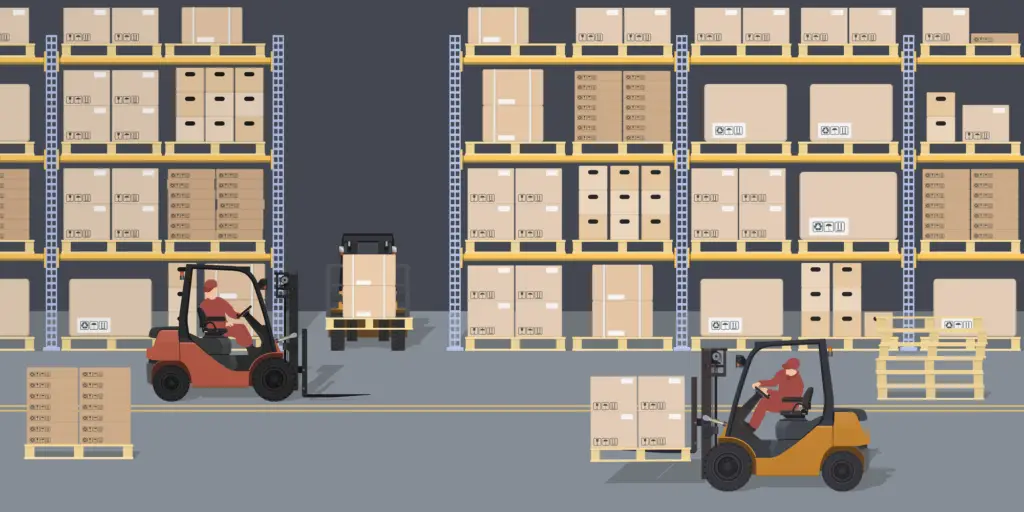
Monitoring vehicles on the territory of the warehouse reduces transaction costs and minimizes the inefficiency of logistics. With IoT solutions, it’s possible to control any technical equipment, such as forklifts, hydraulic carts, stackers, reach trucks, etc. The system builds detailed digital maps and tracks vehicles in real-time. When applied, it’s possible to control the location of equipment, determine its activity during the day, and promptly detect lost or broken assets.
Control is carried out by beacons or tags that are attached to each vehicle and help determine its location. Forklift tracking in the warehouse can perform the following tasks:
- positioning assets on the map in real-time;
- selecting the best route;
- avoiding collisions with other vehicles;
- adjusting routes according to changing tasks;
- providing data on movement history, use time, and downtime.
IoT solutions increase the efficiency of vehicles. Thanks to them, it’s possible to prevent misuse of equipment, increase safety, and reduce equipment downtime.
Technologies for implementing IoT solutions
A wide range of technologies is used to implement IoT solutions in warehouses. The most requested are Bluetooth LE, Wi-Fi, and UWB.
Bluetooth Low Energy
Bluetooth LE is a popular indoor asset monitoring technology that is gaining more and more market share every year. It’s estimated that by 2024 its volume will amount to $14,839 million. The system is based on two types of devices:
- Beacons: installed in different places of the building or attached to assets and periodically sends out radio signals with identifiers.
- Readers: serve as a gateway by receiving signals from beacons and sending them to the platform that determines the location of the object.
Bluetooth Low Energy is a flexible solution that allows you to implement modern technologies at a cost-effective price. The beacons run on coin-cell batteries and can last up to 5 years without replacement. They provide improved data transfer and can track assets with an accuracy of up to 3 ft. All the data that the sensors transmit is sent to the mobile app, which allows you to quickly and efficiently receive information about the location of assets, their movement routes, their removal from the territory, etc.
WiFi
Wi-Fi technology can be used both indoors and outdoors. Inside the warehouse, it helps to track the location of goods and equipment, and outdoors it provides forklift tracking. The system is based on Wi-Fi points that can transmit data and determine the coordinates of an object with an accuracy of up to 10 ft. To obtain information, the MAC address and RSSI are used, allowing the location to be calculated according to the principle of multilateralism.
The choice in favor of Wi-Fi is explained by the many benefits that the technology provides after implementation. It can be applied to existing infrastructure and scaled to meet the needs of a particular warehouse. Wi-Fi signals have a high propagation range, which expands the possibilities of using the system over large areas. If necessary, the platform can be combined with other solutions, which will make deployment more flexible and accurate.
UWB
Ultra-Wide Band is the most accurate technology of the ones mentioned. It’s based on the transmission of high-frequency pulses. It provides a wide range of accuracy from 4 inches to 3 ft and does not require a line of sight. UWB features low power and high bandwidth (over 500 MHz), making it suitable for sensitive assets such as hospital equipment.
A UWB-based system is not suitable for high-volume streaming and is more expensive than others, but it has several advantages, such as:
- resistance to interference;
- wide zoom range;
- the ability to use both for personal and local or global networks;
- spectral flexibility;
- increased data protection.
Indoor tracking and warehouse navigation opens wide opportunities for business development. They are successfully used to automate the warehouse space, which increases productivity and makes the workplace safer for the staff. With IoT solutions, you can optimize the working process of the company, greatly improve inventory management and significantly increase revenue.

